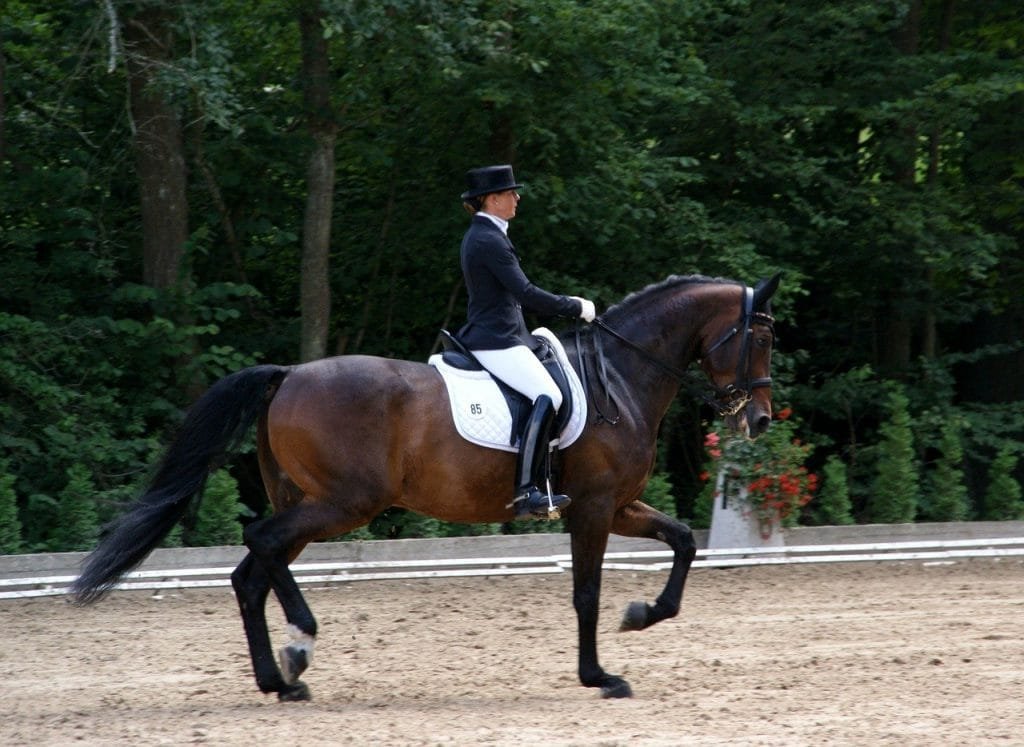Having a good seat is crucial for effective horse riding
Improving your riding seat takes time and practice, but these exercises can help you become a more balanced and effective rider. Incorporate these exercises into your routine, and you’ll find that your seat improves, leading to a more enjoyable and successful riding experience. Remember, a good seat not only enhances your performance but also strengthens the bond between you and your horse.
1. Bareback Riding
Exercise: Try riding your horse without a saddle. Start at a walk and, if you’re comfortable, progress to a trot and canter. Focus on staying balanced and centered on your horse.
Benefit: Riding bareback forces you to use your seat more effectively because there’s no saddle to rely on. This helps you develop a deeper connection with your horse and improves your balance and feel.
2. Posting Trot with a Focus on Seat
Exercise: When trotting, practice posting (rising and sitting in the saddle in rhythm with the horse’s movement). Pay close attention to how your seat feels as you rise and fall.
Benefit: This exercise helps you synchronize your movements with the horse’s rhythm. By focusing on your seat, you improve your overall balance and become more comfortable with the trot.
3. Two-Point Position
Exercise: Practice the two-point position by standing in your stirrups with your weight in your heels. Keep your upper body slightly forward and your legs underneath you. Do this at different gaits, starting with a walk and progressing to a trot or canter.
Benefit: Strengthening your core and leg muscles with the two-point position enhances your balance and stability. It helps you stay light and poised in the saddle, especially during more dynamic movements.
4. Seat Isolation Exercises
Exercise: While riding, focus on isolating different parts of your body. For example, try moving your hips independently of your shoulders or flexing and extending your lower back.
Benefit: Isolating different body parts improves your ability to use your seat effectively without disturbing the horse’s movement. This exercise helps you become more aware of how your body affects the ride.
5. Stretching and Flexibility
Exercise: Incorporate stretching routines into your daily schedule. Focus on areas that are crucial for riding, such as your hip flexors, hamstrings, and lower back. Yoga or Pilates are great for increasing flexibility.
Benefit: Greater flexibility in your hips and lower back allows you to move more naturally with the horse. This flexibility reduces stiffness and helps you maintain a more relaxed and effective seat.
6. Weight Shifting Exercises
Exercise: While riding at a walk, practice shifting your weight gently from one seat bone to the other. Pay attention to how this affects your balance and your horse’s movement.
Benefit: Learning to shift your weight smoothly helps you use your seat aids more effectively. This exercise also helps you stay centered and balanced, making it easier to influence your horse’s movement.
7. Sitting the Trot
Exercise: Practice sitting the trot with a focus on keeping your lower back relaxed and following the horse’s movement. Aim to stay as quiet as possible in the saddle.
Benefit: This exercise helps you develop the ability to absorb the trot’s motion without bouncing. It teaches you to use your seat to stay in rhythm with the horse and remain balanced.
8. Walk-Trot Transition
Exercise: Practice smooth transitions between walk and trot. Focus on how you use your seat to signal the horse to change gaits and how these transitions affect your balance.
Benefit: Mastering transitions helps you become more intuitive with your seat aids. It improves your overall seat stability and allows for smoother and more precise changes in gait.
9. Core Strength Exercises
Exercise: Strengthen your core with exercises like planks, sit-ups, and leg raises. A strong core supports better balance and control in the saddle.
Benefit: A strong core helps you maintain a stable and balanced seat. It also improves your overall riding posture and makes it easier to handle various movements and gaits.
10. Visualization and Mental Practice
Exercise: Off the horse, spend time visualizing yourself riding. Imagine how your seat should feel and how you want to move with the horse. Practice mental imagery to reinforce your physical skills.
Benefit: Mental rehearsal enhances your physical abilities. By visualizing your riding, you build confidence and reinforce the skills needed for a better seat, making it easier to apply them when you’re actually riding.




